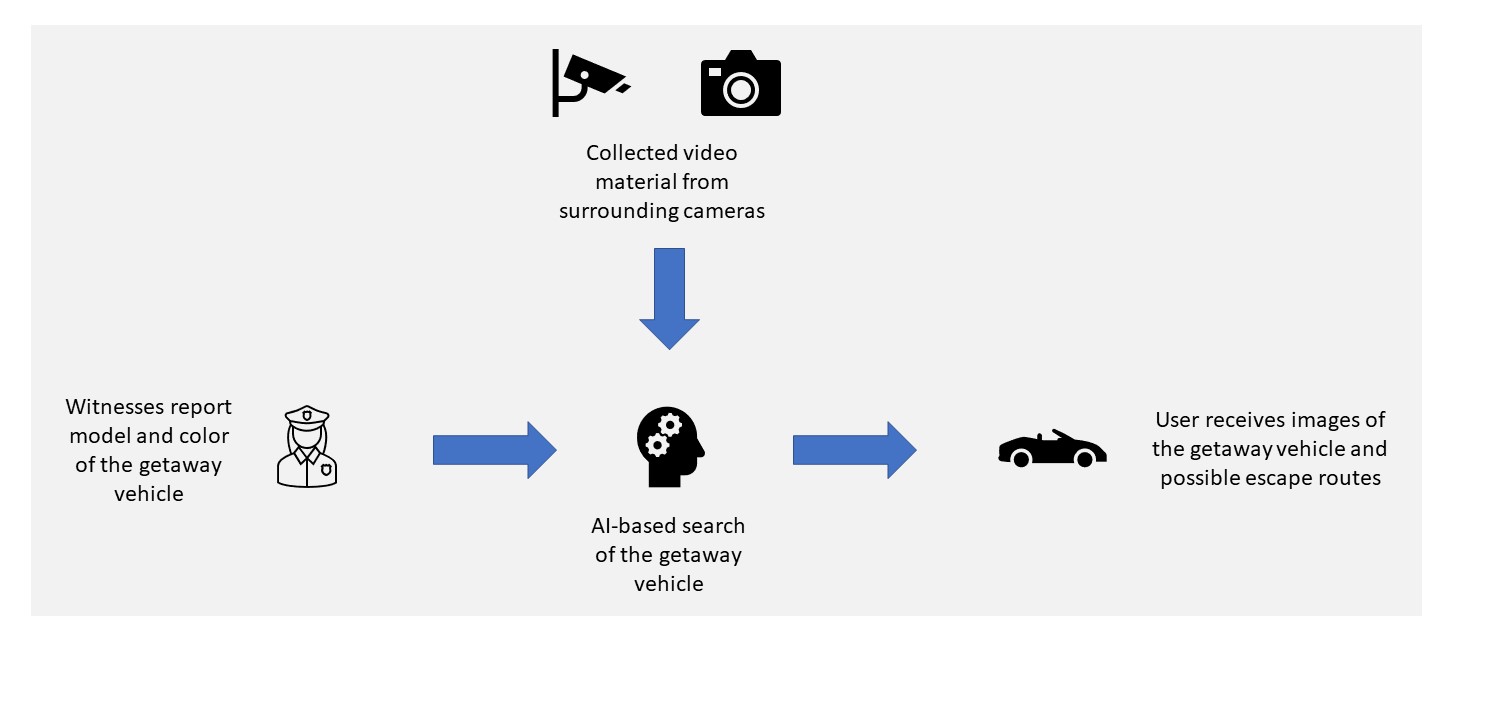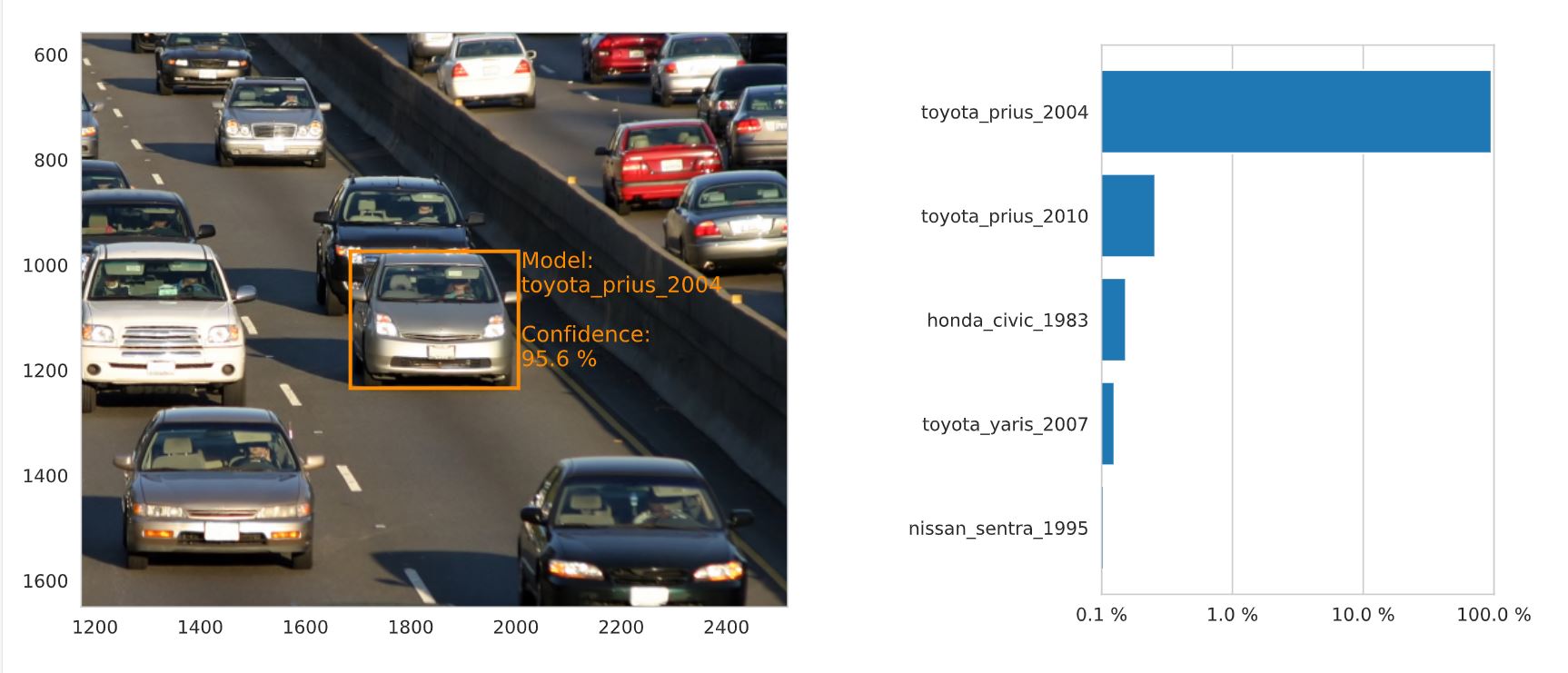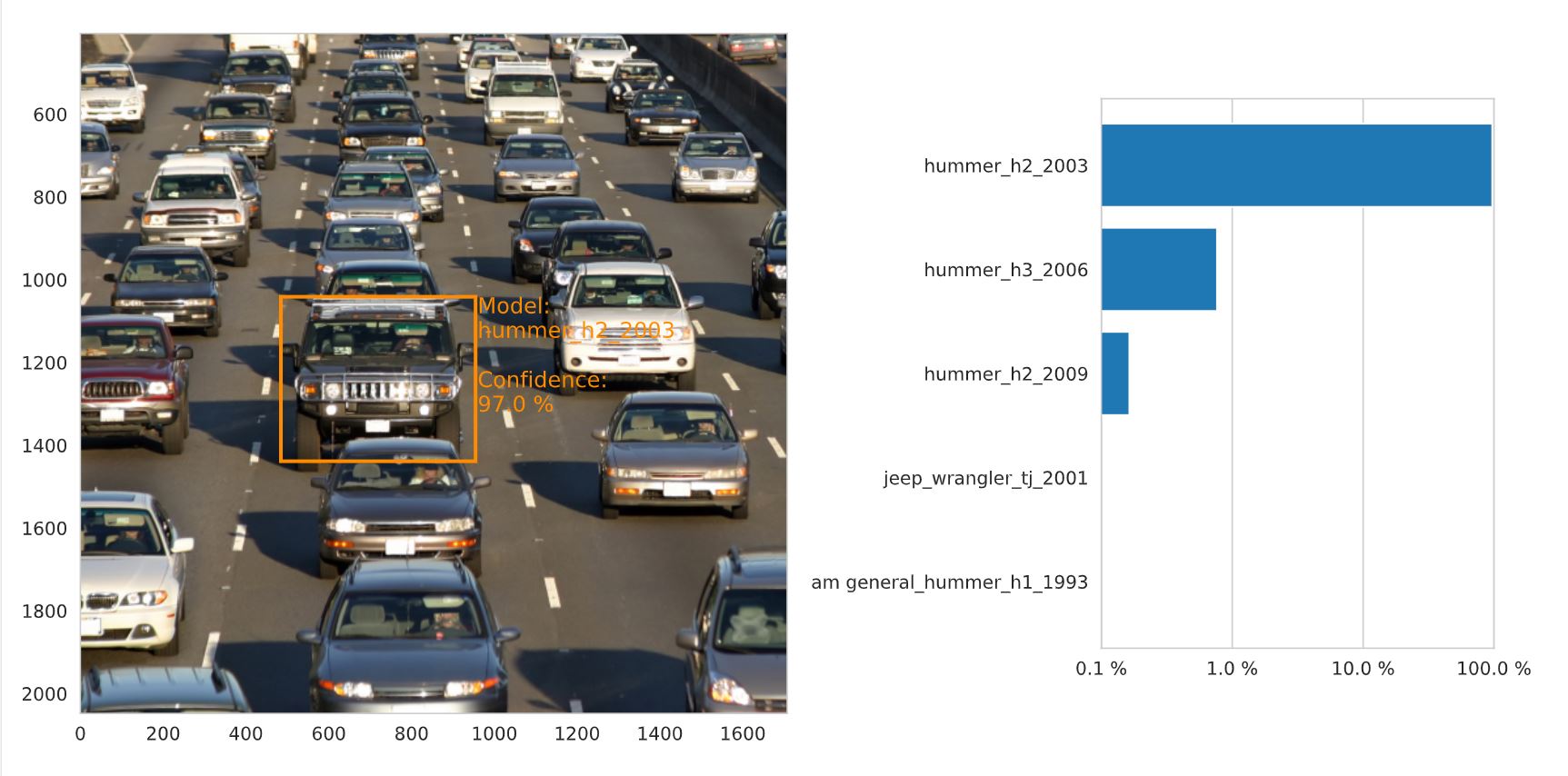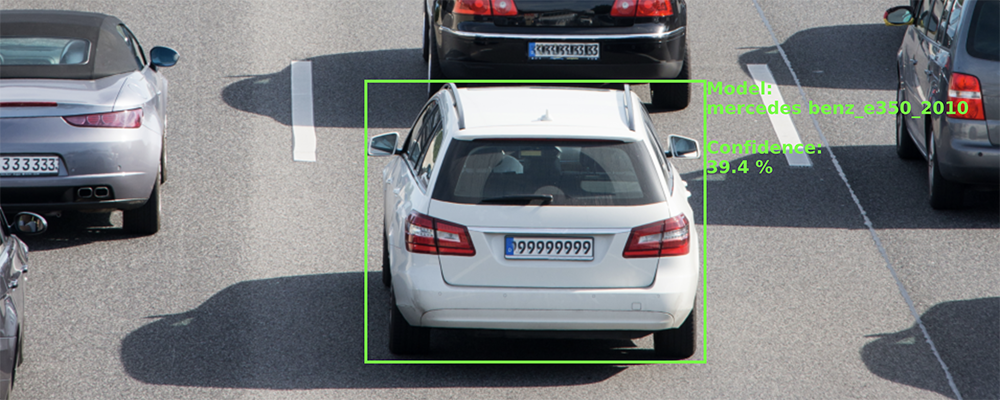Fast and effective action by the police authorities following criminal offenses is of crucial importance. In the case of crimes involving a getaway vehicle, it is extremely important to be able to quickly trace the vehicle's escape route. In this context, the recognition of the vehicle in videos based on witness statements plays a decisive role, as it enables the rapid localization of the possible getaway vehicle in the surrounding surveillance cameras. This significantly increases the chances of a successful search for the perpetrators and reduces the risk of them absconding. Thanks to optimized procedures, detection can be carried out both as real-time evaluation in live video streams and as retrograde mass data evaluation.
Vehicle classification
Quick recognition of the vehicle in images and videos

Problem statement
A central problem that we are addressing in our research in the Video Exploitation Systems department is the development of a fine-grained vehicle classification in order to correctly recognize the vehicle model identified by witnesses in videos. A particular challenge of the problem is that new vehicle models are constantly introduced to the market, which makes it difficult to collect sufficient amounts of data for training AI models. On the one hand, a continuous manual expansion of the database would mean an enormous effort, on the other hand, data protection requirements pose high hurdles for data collection. Our research therefore focuses on achieving a very high level of recognition accuracy with limited data availability for training AI models.

The procedure outputs a "confidence" for each known vehicle model, which indicates how likely it is to be a vehicle of this model. In this case, it is a Toyota Prius with model year 2004, to which the AI model assigns a probability of over 95%. However, the model does not completely rule out the possibility that it could also be a Toyota Prius from 2010, for example.

In this case, the AI model assigns a confidence level of 97% to the correct vehicle model Hummer H2 2003.
Solution approach
Fraunhofer IOSB is pursuing various strategies as a solution approach. In addition to optimizing AI processes for use with small amounts of data, we are researching the use of alternative data sources. The use of professionally produced web images plays an important role here due to their broad availability. However, for security-relevant scenarios, there is often a clear discrepancy between web images and the surveillance and cell phone images commonly used in security applications, which usually have different perspectives and lower quality. To overcome this challenge, we are researching methods for cross-domain adaptation of AI models. Here, images from one domain, such as web images, are used in training in order to be able to carry out recognition in other domains, such as surveillance images, with high accuracy. Another research topic is the use of synthetically generated data. Here, we are investigating both the creation of images using AI processes and the use of images generated by ray tracing.
 Fraunhofer Institute of Optronics, System Technologies and Image Exploitation IOSB
Fraunhofer Institute of Optronics, System Technologies and Image Exploitation IOSB 